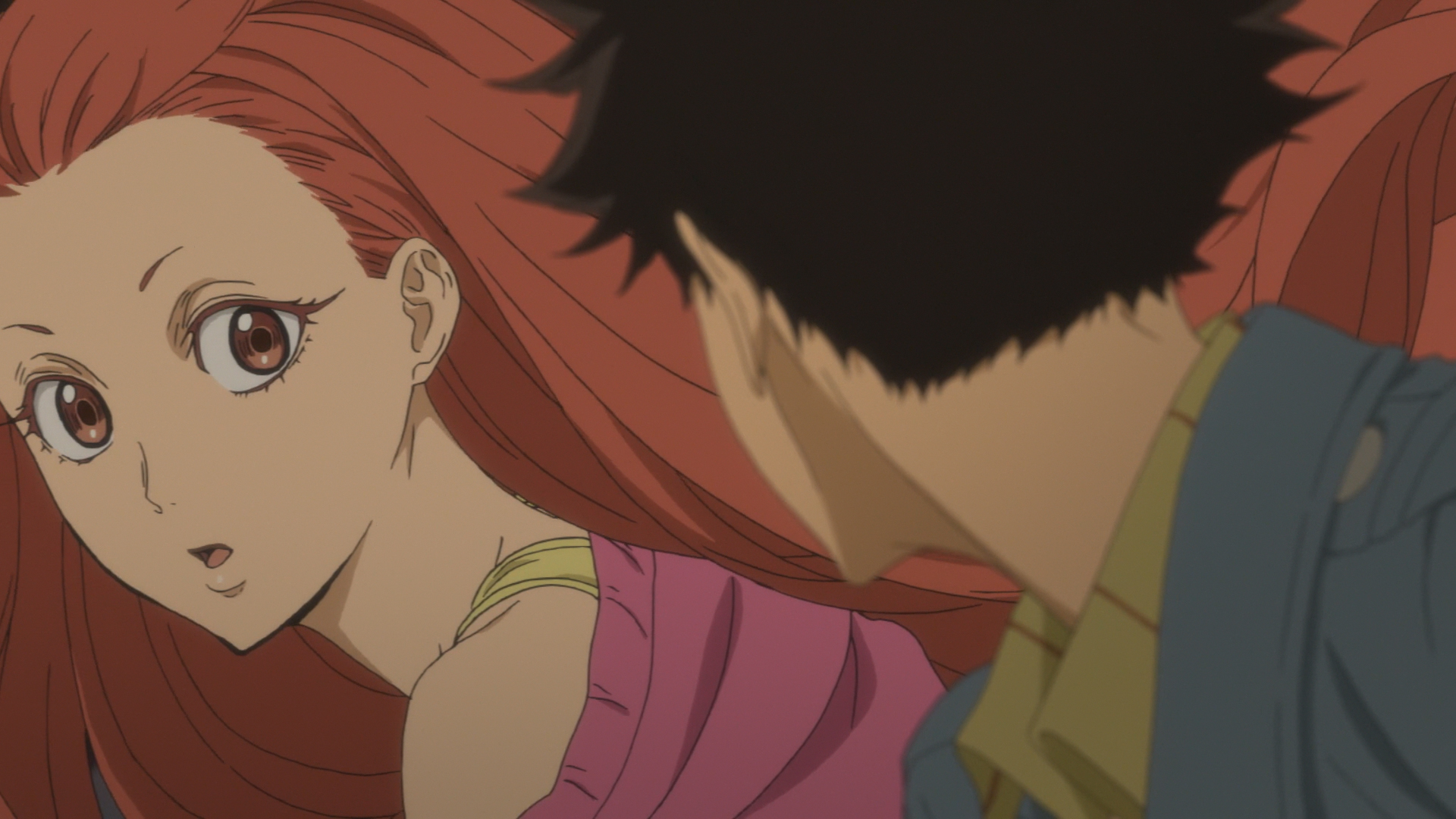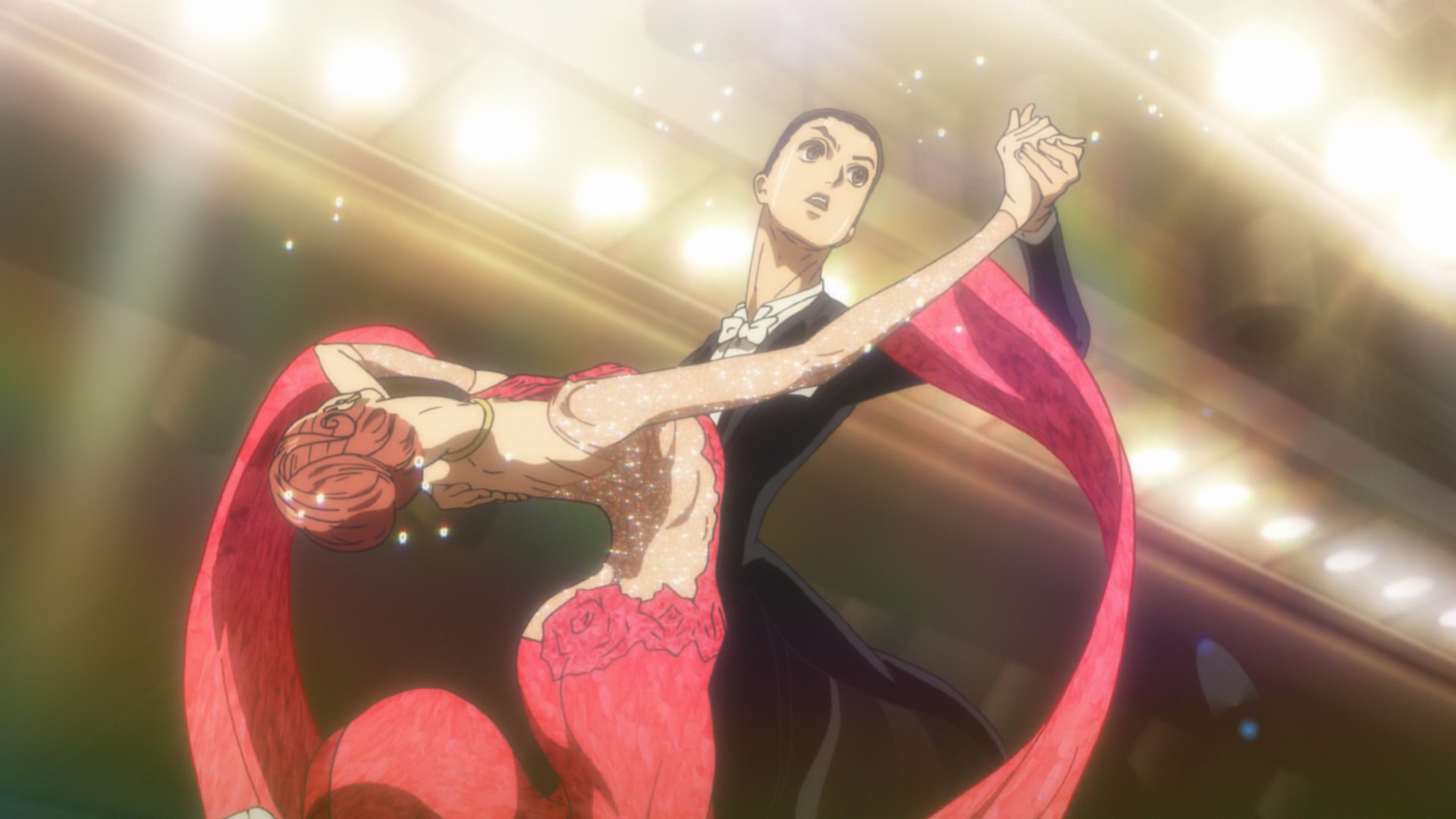Welcome to the Ballroom: Part 2 Review
After making his first steps into the world of competitive ballroom dancing, Tatara Fujita is eager to move up and fulfil his promise to friend and love interest Shizuku Hanaoka and battle her on the dancefloor; however, he currently lacks the partner he needs to be able to enter official competitions.

While spectating at a competition event where his mentor Kaname Sengoku is competing, Tatara bumps into one of his new high school classmates, Chinatsu Hiyama, who turns out to be a massive fan of Sengoku’s partner, Chizuru Hongo. After stalking Tatara to their dance studio to meet her heroes, Chinatsu is forced into a practice session with Tatara where it is revealed she is a dancer herself. While she has no interest in him initially, Chinatsu reluctantly decides to partner up with him after reuniting with her old partner and rival Akira, who harbours a grudge against her after she quit dancing in their final year of middle school.
Despite seemingly meeting the partner he desperately needs, Tatara and Chinatsu are complete opposites to each other and don’t fit together well; yet with rivals old and new appearing around them and with scores to settle, the two are going to have to find a way to work together or else see their dreams of achieving dancing stardom go up in smoke.

While the first part of Welcome to the Ballroom was more focused on using Tatara as a vehicle to introduce all of the main characters and make them shine, this second part of the series focuses a lot more on his individual growth as a dancer. While he is still frequently awkward to watch and still can’t match up to some of his new-found friends in ability, he’s clearly getting better the more he dances. With his keen observation skills, he is able to get the technical stuff down pat, yet his lack of interpersonal skills and experience of dancing with another person prevent him from showing his true potential.
This is where Chinatsu comes in as someone whom he can bounce off, as her feisty and fiery nature and her natural talent constantly push Tatara to improve in order to keep up with her. Compared with the other female characters we’ve met in the series so far she’s a breath of fresh air as she’s not a perfect prodigy like Shizuku or someone like Mako who is very malleable and easily falls into place. While she is very talented, her years of experience in leading make her a double-edged sword in that she is afraid of giving up the feeling of control that she is used to. So, while she should be the shining example of a leader that Tatara needs, she instead refuses to back down unless Tatara actually grows a spine.
That’s certainly his real challenge, and I wouldn’t say he’s completely spineless as he butts heads with Chinatsu right from the start and they can easily fight and argue as they enter a fruitless battle to understand each other. While their petty fighting can be very overbearing the more it drags on, it does allow both characters to be driving forces for each other as they start to form a unique kind of partnership that is a mix of thrilling, fascinating and during the times where they mess up, hilarious.

It’s good to see the humour in the series being a bit more situational, but it does still have some issues in how it offers its comic relief, inserting some fanservice, boob jokes and even a badly framed gay joke that don’t really add anything to the series. It can still have its fun, but it’s best when it is tying its humour to the existing rivalries between different characters.
The pacing separates this part of the series cleanly into its two main plot threads, the first of which being Tatara and Chinatsu trying to develop as a couple as it speeds through their three months of training together; before slowing down massively for the central arc with the Tokyo Metropolitan Dancesport Tournament. I felt it may have slowed things down too much here, as it occasionally felt like not enough was happening on screen, with characters aimlessly chatting away in one episode, for example, that could have been cut completely, as it had no impact on the overall plot.

However, it does allow it to give some time to developing the backstories of some of the other characters, with episodes dedicated to Akira and her relationship with Chinatsu, as well as Tatara’s new rival, Masami Kugimiya, a talented dancer who has made a miraculous comeback after getting into an accident a year ago that looked like it would cut his career short. These episodes are great for seeing these characters as not just rivals with bad attitudes, but people who have gone through some rough experiences to make them who they are, and I ended up respecting them both a lot more as a result.
The animation is generally consistent with the first half of the show, with the most pivotal dance sequences exhibiting some really nice, fluid animation, punctuated by dramatic freeze frames that utilise a cool technique of keeping the characters still while their clothing whips around them. You’ve still got the standard still frames with speed lines that are used in other sports anime, but the former just look a lot cooler and give a better impression of creating movement. This also helps bring attention to the costume design with some pretty spectacular dresses and sharp-cut suits on display here which not only look great, but tie into each character’s personality. Chinatsu’s dress evokes both beauty and power for example, while Kugimiya suits that sharp-cut look thanks to being surprisingly tall.
The soundtrack feels more integrated in this part than it did in the first, with the songs used in the dances featuring more prominently, particularly with the swing classic “Sing, Sing, Sing” taking pride of place in the final quickstep round of the tournament. The opening theme, “Invisible Sensation” by Unison Square Garden is a proper jam and fits well with the opening animation, while Mikako Komatsu’s “Swing heart direction” is a sweet and simple ending theme. The quality of the voice acting is still very strong, with the voice actors for newly introduced characters such as Chinatsu (Chinatsu Akasaki) and Kugimiya (Takahiro Sakurai) giving a really strong emotional range and a good representation of a dark and moody personality respectively.
Like Anime Limited’s first part of this series, it remains a bare-bones subtitle-only release with nothing on the discs apart from the episodes themselves, although apart from the odd subtitle error or two it seems to be more polished than the first part. The collector’s edition set does however come in a nice chipboard box with a digipak to hold the discs; along with a small booklet containing character profiles and artwork, and 5 art cards.

Overall, this second part of Welcome to the Ballroom gives a satisfying conclusion to this arc of Tatara’s story, with the focus on developing his character and his dancing skills welcome after initially focusing more on the other characters. While it lacks the tightness and tension of the first part of the series, due to the glacial pacing in the latter episodes and the show’s brand of humour and occasional fanservice can be a bit of miss. this show remains an exciting showcase of the spectacle of competitive ballroom dancing.


